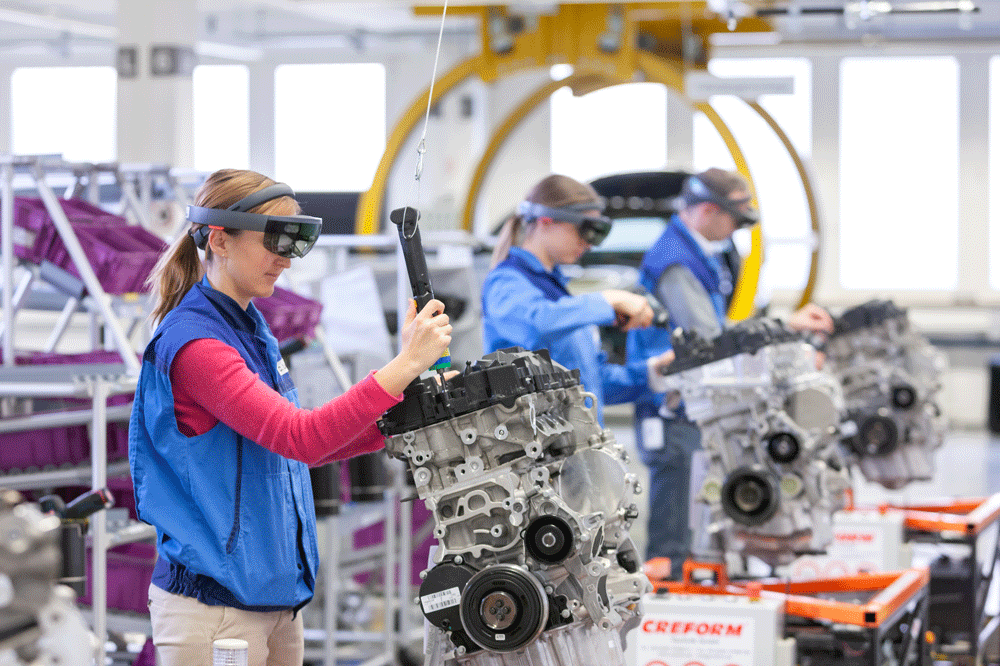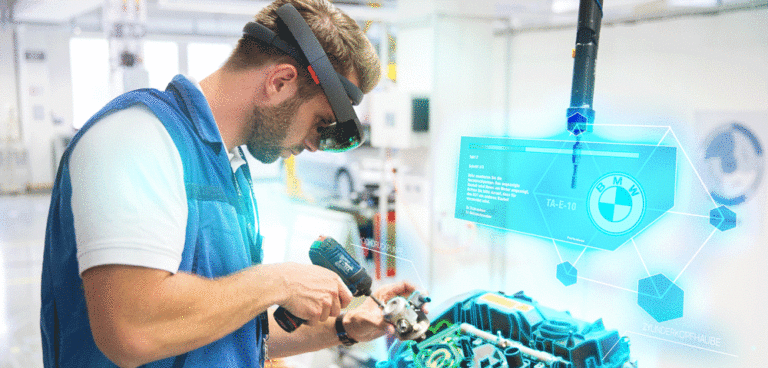The BMW Group production team is increasing its focus on effective virtual and augmented reality applications. For about 18 months now the OEM’s production academy has been using AR goggles in training sessions for engine assembly units. Visualizations guide participants through all process steps and give specific information.
Three people can go through the AR training at the same time, after receiving quick guidelines from a trainer who supervises their progress. Previously, a trainer had to work with one person at a time, while with the new system this number has increased to three. Surveys among participants and evaluations of their learning success have shown no differences in quality compared to conventional training courses.
It is also possible to adapt this engine assembly training to other screw joint processes thanks to an authoring tool developed for designing training programs. Setting up a new training program with this software is quick and easy: To complement real images, the relevant points of interest are determined at a regular PC and then set with the aid of AR goggles, and that’s all. In the course of 2019, this software will be made available to all interested staff via the self-service portal.
Checking a complex part weighing up to 25 tons, such as a press tool for the production of body parts, can take a lot of time. Thanks to AR technology, staff at the BMW Group Toolmaking and Plant Engineering unit site in Munich can mount a standard tablet on a tripod, which uses the built-in camera to produce an image of the tool.
Then, an AR application superimposes this image with the CAD construction data of the tool ordered. Based on an average of 50 criteria, such as drill holes and other clear surface features, the staff can see whether all production specifications have been implemented.
In the event of minor deviations, it may make sense to rework the tool on-site – because the early detection of the issue leaves sufficient time before the tool has to be sent to the assembly area for completion with further components. Later this year, the toolmaking unit in Munich will completely convert the inspection of delivered tools to the AR application.
The BMW Group also undertakes target/actual comparisons at its Munich plant. Using an AR application, specialists use pre-series vehicles to check the maturity of construction concepts and the correct installation position of components in these vehicles. The system makes it possible to determine whether an exhaust system is installed in the correct position, and whether all the necessary parts have been mounted.
Visualization of relevant CAD data only takes a few seconds. Data from several parts can be combined as desired and superimposed on the camera image of the tablet. An algorithm calculates the ideal position of individual components in relation to each other and highlights important design features.
The application, which was co-developed with the Fraunhofer Institute for Computer Graphics Research, provides important information as to whether any adjustments, be it in vehicle design or manufacturing processes, are necessary before a model can go into series production.



